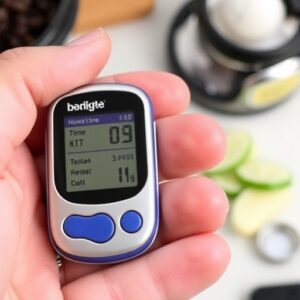When I was diagnosed with prediabetes, it felt like a wake-up call. My doctor explained that while my blood sugar levels weren’t high enough to classify as Type 2 diabetes, I was on the brink of developing it. Those words stuck with me: “You can reverse this, but you need to act now.”
At first, the idea of making lifestyle changes seemed overwhelming. But I soon realized that I didn’t need to overhaul my entire life overnight. Instead, I started making small, intentional changes that added up to something big.
Here’s how I reversed my prediabetes and took back control of my health.
Understanding Prediabetes: The First Step
Prediabetes is a condition where blood sugar levels are elevated but not yet in the diabetic range. It’s often a silent condition with no obvious symptoms, making it easy to overlook.
For me, the diagnosis came after a routine blood test revealed my fasting glucose and A1C levels were higher than normal. My doctor explained that without intervention, my risk of developing Type 2 diabetes would skyrocket.
Hearing this was a shock, but it also gave me clarity: I had the power to change the trajectory of my health.
The Small Changes That Made a Big Difference
Reversing prediabetes wasn’t about quick fixes or fad diets. It was about adopting sustainable habits that worked for my lifestyle. Here’s what helped me the most:
1. Changing My Diet, One Meal at a Time
I started by making simple swaps rather than overhauling my entire diet.
- Swapped white bread for whole-grain bread.
- Replaced sugary snacks with fresh fruits, nuts, and yogurt.
- Cut back on processed foods and focused on whole, nutrient-dense ingredients.
One of the most impactful changes was learning to balance my meals. I made sure every plate included a healthy mix of protein, fiber, and healthy fats to keep my blood sugar steady.
Favorite Meal: Grilled salmon with roasted vegetables and quinoa—a delicious, blood-sugar-friendly dinner.
2. Embracing Movement
Exercise became a cornerstone of my routine, but I didn’t start with intense workouts. I began with daily 20-minute walks around my neighborhood.
Over time, I added more variety:
- Light strength training twice a week.
- Yoga for flexibility and stress relief.
- Weekend hikes to keep things fun and engaging.
These small, consistent efforts helped improve my insulin sensitivity, making it easier for my body to regulate blood sugar levels.
3. Getting Serious About Sleep
Before my diagnosis, I underestimated the importance of sleep. Poor sleep can lead to insulin resistance and increased cravings for sugary foods, which worsens blood sugar control.
I started prioritizing 7–8 hours of quality sleep each night by:
- Establishing a regular bedtime routine.
- Limiting screen time before bed.
- Creating a calm, dark sleep environment.
4. Managing Stress
Stress was a major trigger for me. Whenever I felt overwhelmed, I’d reach for comfort foods or skip exercise. Learning to manage stress was key to staying consistent with my new habits.
Here’s what worked for me:
- Meditation: Even just 10 minutes a day helped me stay grounded.
- Deep Breathing Exercises: These were especially helpful during stressful moments.
- Journaling: Writing down my thoughts helped me process emotions and focus on gratitude.
5. Tracking My Progress
I started using a simple blood sugar tracker to monitor my glucose levels and see how my body responded to different foods and activities. Seeing improvements week by week motivated me to stay on track.
The Results: Reversing Prediabetes
After six months of consistent effort, I went back for follow-up blood work. My fasting glucose and A1C levels had dropped back into the normal range. I had officially reversed my prediabetes!
But the benefits didn’t stop there:
- I felt more energized throughout the day.
- My clothes fit better as I shed a few extra pounds.
- I gained confidence knowing I could take control of my health.
Lessons Learned
- Small Changes Add Up: You don’t have to be perfect. Focus on progress, not perfection.
- Consistency Is Key: Sustainable habits will always win over quick fixes.
- Listen to Your Body: Pay attention to how different foods and activities affect your energy and blood sugar levels.
Final Thoughts
Reversing prediabetes wasn’t just about lowering my blood sugar levels—it was about reclaiming my life. The changes I made not only improved my health but also gave me a sense of empowerment and control.
If you’re facing a similar diagnosis, know that it’s never too late to make a change. Start small, stay consistent, and celebrate every victory along the way.
Let’s continue the conversation! Share your experiences or tips for managing prediabetes in the comments below, and explore more resources at BloodSugarHealthy.com.





